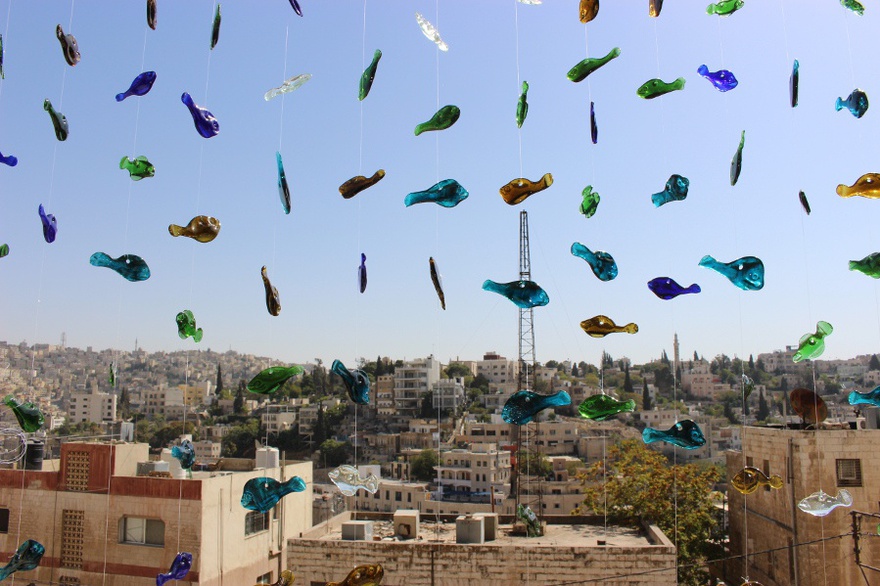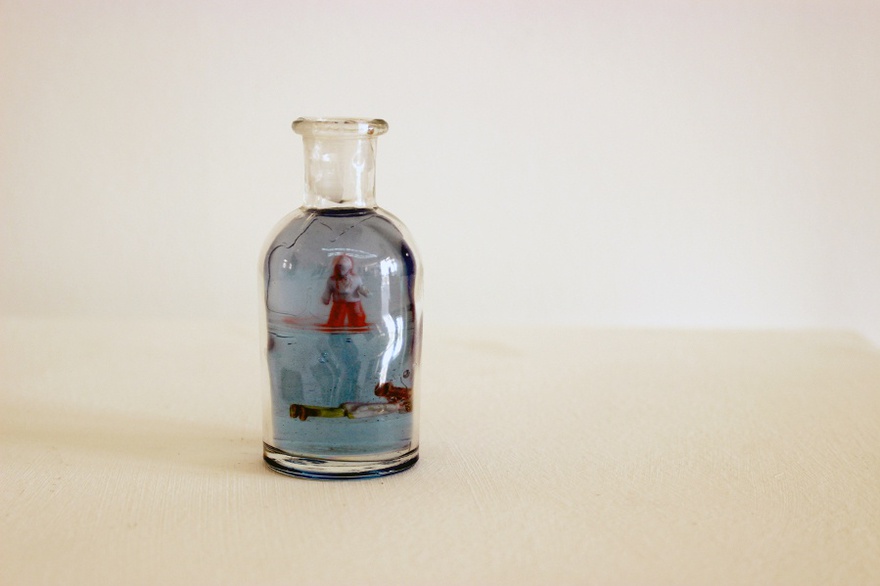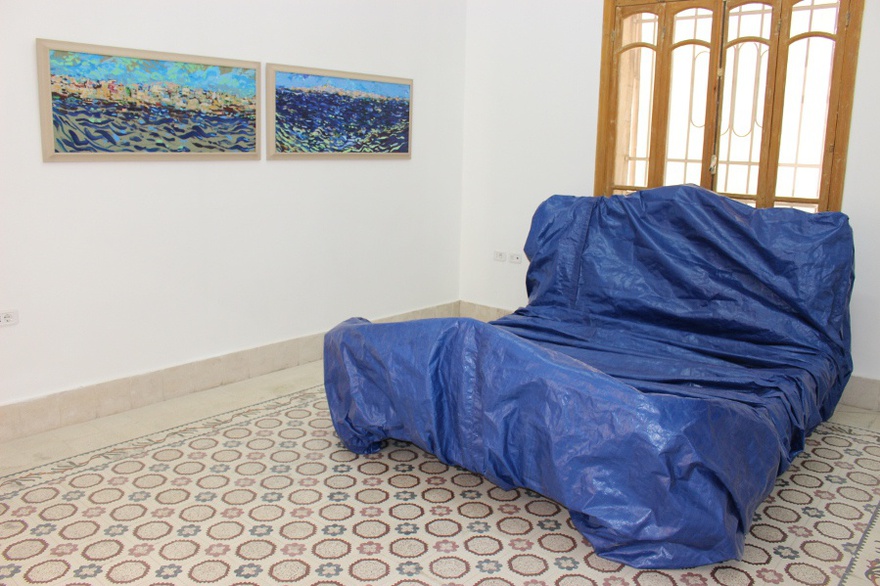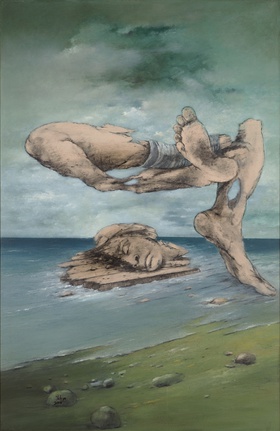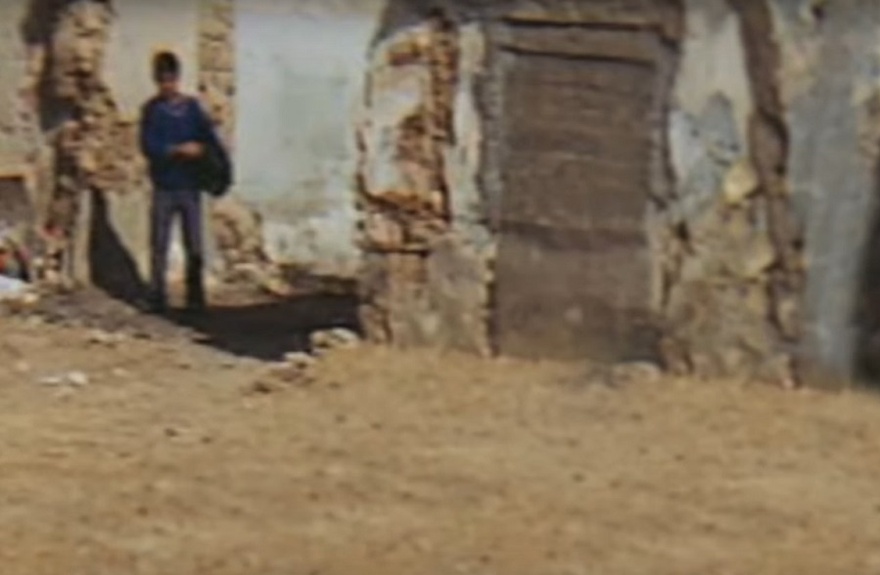Reviews
Qalandiya International Report: Amman
On 22 October 2016, a talk was held between participating artists of the Amman chapter of the 2016 Qalandiya International (Qi2016) and artist and researcher Yazan Khalili. During the discussion, Khalili made a familiar remark uttered by Palestinians in the West Bank regarding their problematized relationship to Jordan: 'it's as if Jordan was the distance between the West Bank and the airport.' As much as this phrase attests to the geographic alienation between artists based in Amman and Palestine, it also provides an important context from which to read the artworks presented at Qi2016, part of which was hosted for the first time in Amman at Darat Al Funun, a prestigious private arts foundation that constituted one of the sixteen participating institutions for the 3rd Qalandiya International. Held between the 5th and the 31st of October 2016, Qi2016's Amman chapter attracted a diverse Jordanian crowd, not limited to the usual upscale types and foreign expat circles who visit Darat Al Funun's compound.
Qi2016 Amman sought to mark the artistic links between Palestine and Jordan, yet in doing so revealed the discrepancies between the political discourse and the artistic expressions that explores the right of return for Palestinian refugees. Working within the title This Sea is Mine, a reference to a poem by the late-Palestinian poet Mahmoud Darwish, Qi2016 Amman offered a starting point for seven participating artists – the majority of whom are based in Jordan yet who mostly identify as Palestinian – to explore the complex relationship that Palestinians of different origins and whereabouts have with the sea as a symbol of nostalgia, freedom, political exodus and even death. These artists included: Adnan Yahya, Hani Alqam, Jehad al Ameri, Mo'awaia Bajis, Raed Ibrahim, Saba Innab, Mohammad Shaqdih.
Shying away from a past and present that is politically turbulent, Jordanian artists of Palestinian origin tend to create works that avoid direct political interpretation. The coupling of artistic political 'correctness', with decades of (re)establishing a national identity – negotiated through pervasive political institutions and frameworks – paved the way for Jordanian artists of Palestinian origins to address broader themes rather than sticking to politically inspired Palestinian art. What is interesting about the first Qi in Amman, is that it commissioned seven Jordanian artists to frame their works within a Palestinian context, where the idea of national identification has elsewhere not been explicitly addressed in their artistic practice.
The results varied between direct interpretation of the title and exploration of broader contexts regarding the right of return, exodus and diaspora. Raed Ibrahim's mini sculptural installation Floats (2016) addresses the problem of working under a predetermined title and made a conscious attempt at divorcing the sea as a site of return from a possible romantic interpretation. Constructed from polyester, resin and epoxy based material to represent the sea in various small-sized containers, Ibrahim uses the rules of material properties – which is to say (as the text description made clear) 'Mass with a higher density than water sinks, and mass that has a lower density than water floats' – to speak directly to the current refugee crisis. By including small miniatures of people, animals and objects such as airplane figures that are either floating, sunk or suspended in the water containers, the politicization of the sea is emphasized.
Elsewhere, artist and architect Saba Innab's concrete sculpture Time is measured by Distance (2016) comments on the immobilization of the present day political reality, as something that is obstructed yet still to be realized. Unlike most other participating artists who depicted sea-water in various forms, Saba chose not to, and took on concrete to create a structure that resembled a section cut from an impossible staircase (otherwise called Penrose stairs), presenting physical movement (in political terms) as something interrupted and ultimately impossible in its current form. This emphasis on movement as obstructed by political and physical impositions is also centralized in Mo'awia Bajis's Journeys (2016). In a simple map of Jordan/Palestine dated 1958, two points are connected in a curved line, to mark the crossing of the Allenby Bridge from Palestine to Jordan to highlight the artist's family exodus.
The Amman-based artist Hani Alqam focused on the nostalgia of return by answering the question 'What does the sea means to me?' through his sculptural installation My Dream; a work that consists of a 50's style framed bed covered with blue plastic sheets to resembles the waves of the (imagined) sea. (It is worth noting that the plastic covers were intended to produce an audio effect to resemble the sound of the waves, though this was not realized due to technical limitations). The installation is accompanied by paintings depicting the sea of Jaffa, in turn creating a scene that considers the right of return as a dream that can only be realized aesthetically. Alqam, who has never been to Palestine, sought to reclaim his forced separation from his country of origin, but interestingly enough, he identifies himself as a Jordanian artist on his personal website.
Out of the seven artistic contributions, Adnan Yahia's two paintings carried the most explicit expressions of anguish and alienation regarding the notion of return. In the first painting, an old man is depicted carrying a dying son while sitting on a grave marked '1948 Palestine'; in the other painting, a disfigured human figure is shown on the sea, head separated from body, which lies on a piece of floating wood not far from the beach. In the moderated talk between Yahia and Khalili, Yahia remarked on this disembodied relationship to geography vis-à-vis Amman, claiming 'here we have neither sea nor land. What should we paint?' The notion of abandoning nostalgic or symbolic political engagement and focusing instead on the historical realities that accompanied the tragedy, highlights the Nakba as something still ongoing and unresolved.
The struggle to reclaim that which has been lost is considered in Jehad Al Ameri's installation The Return to the Sea – a sand box filled with sand from Akka, accompanied by six paintings of foot marks to offer a dreamy and almost child-like representation of being forbidden from a site of leisure. Similarly, Mohammad Shaqdih's The Fish of Hebron plays with contradictions to comment on the wrought reality of (touristic) access to the sea. Years ago Shaqdih shot about four hours of footage in Hebron, and while there acquired a few dozens of glass fish and waited for a proper theme to use these materials under. The results are an installation using the colored fish, and an accompanying video, an obvious comment on the fact that Hebronites have no access to the sea, and the hardships of Palestinians accessing this sea in general.
The accompanying Qi2016 Amman film series, predominantly dealt with themes of exile and return, including Anne Marie Jacir's The Salt of this Sea (2008) that depicts Soraya, a Palestinian American who returns to Palestine to reclaim her grandfather's savings which was frozen back in 1948 by the Israeli occupation. The drama unfolds to face the often romanticized notions of the Right of Return and contains a political dialogue that is rarely seen in mainstream cinema.
Moving even further away from commercial cinema, was Kamal Aljafari's feature-length film Recollection (2015), which pieces together Israeli archival footage of Jaffa and interspersed with his own photographs, swapping direct narrative with a visual one that concerns itself with the memory of the 'place' and a visual piecing-together of imagery to create a momentary site of return. Finally, in Trip along Exodus (2015), director Hind Shoufani documents the last years of her father Dr. Elias Shoufani, an exiled PLO leader and intellectual, retelling the life of her father who is exiled in Damascus and the history of the PLO along the way. The three films were thematically linked to the whole program, by attempting to process the notion of 'return' between fiction and reality; a troubled reality in the first film, an attempt in reconstructing memory in the second, and in the third an ultimate and uncompromising political goal.
The importance of expanding Qalandiya International to other cities lies mainly in re-thinking what constitutes Palestinian art, as well as how artists in the diaspora choose to connect with their Palestinian artistic and political identity. Thus, the programme of events and commissioned works – whether intentionally or not – invited a critical reflection on where Palestinian art, at home and abroad, is heading, and if such a term needs a clearer definition.
View the full online exhibition catalogue for Qalandiya International 2016: This Sea is Mine by following this link.

